Homemade Pasta Recipe – So Easy!!!
Making fresh homemade pasta might seem intimidating, but it’s simpler than you think! With just a few basic ingredients—flour, eggs, olive oil, and a pinch of salt—you can create perfect, tender, and chewy noodles every time.

Recipe For Homemade Pasta
Making your own pasta is such a fun and rewarding experience, and the best part? You get to enjoy a delicious, homemade meal at the end! This versatile pasta dough lets you create any noodle shape you love, making it perfect for all your favorite dishes.
What You’ll Need for This Fresh Pasta Recipe
I’ve put together a complete list of tools mentioned in this post.
All links are affiliate links.
Start with the simplest of tools and then work your way up.
The simplest pasta is made with a rolling pin, sharp knife, or pizza cutter. If you don’t have special equipment, you can still make fresh pasta at home with simple tools.
The next level up is buying a pasta roller. Two options are:
- A KitchenAid Mixer (affiliate link) and its pasta attachments. You can buy the rolling and cutting attachments, and a pasta extruder attachment is also available.
- Atlas 150 Pasta Maker to cut the pasta into different noodle shapes.
Tools You’ll Need
Remember that you don’t necessarily need anything fancy, but the right tools give you the best results with any job. This is just a suggested list of tools to ensure your pasta-making journey is top-notch.
- Bench Scraper
- Rolling Pin
- KitchenAid Stand Mixer
- KitchenAid Pasta Roller Attachments
- KitchenAid Pasta Press
- Atlas 150 Pasta Machine
- Atlas 150 Pasta Rolling Attachments
- Ravioli Tablet
- Ravioli Cutters
- Flour Duster
- Pasta Drying Rack
Ingredients For Making Pasta

- Flour. This pasta recipe uses two types of flour: 00 flour and semolina flour. However, you can also use all-purpose flour if you don’t have anything else on hand.
- Eggs. 4 large eggs, at room temperature
- Olive oil
- fine sea salt
- nutmeg (optional)
How To Make Homemade Pasta
This recipe can be made by hand by kneading the pasta dough on a work surface. If you have a stand mixer, the pasta dough can be mixed using the paddle or dough hook attachment.
To Make Pasta Dough By Hand
I prefer to make pasta by hand. Not only is it super easy you get a nice arm workout. You’ll be surprised how little clean-up you must do because 100% of the flour is incorporated neatly into the dough.
- Measure the flour onto a clean work surface. Mix in the salt. Using your hands, create a mound and a well in the center of the flour.
- Add the eggs and the olive oil to the center of the well.
- Use a fork to whisk the eggs and olive oil together. Be careful to keep the liquid in the center of the well. Using the fork gradually, incorporate the flour into the center of the well. You can use your other hand to support the edges of the well as you mix in the eggs.
- Knead the dough by hand until it is smooth and elastic. It can take about 10 minutes.
- Rest the dough: Add a little flour to a clean work surface and cover the smooth dough ball with a bowl. Rest on the counter for at least 30 minutes before rolling out your pasta noodles. This allows the gluten proteins to relax.




To Make Pasta Dough In A Stand Mixer
- Combine the ingredients: Add all ingredients to your stand mixer fitted with a dough hook.
- Beat the dough until it comes together in a nice smooth ball. You may have to take a spatula to scrape the sides down a few times during the beating process.
- Rest the dough: Once it has come together, remove it from the bowl and cover it with a bowl to rest or a lightly damp kitchen towel.
Make Pasta Dough In a Food Processor
- Combine the ingredients: Add all ingredients to the bowl of your food processor fitted with the s-blade.
- Process the dough until it resembles coarse sand. It will look much like what a pie dough looks like at this stage.
- Knead the dough: Dump the dough onto your work surface and continue to knead it by hand until it has come together in a nice smooth ball.
- Rest the dough: Once you have a nice smooth over it is with a bowl to rest or a lightly damp kitchen towel.
Making Pasta Without A Pasta Machine
You don’t need fancy equipment to make homemade pasta dough. When I learned to make pasta in Italy, we only used a rolling pin and a pizza cutter to cut the dough.
Fresh Pasta With A Pasta Machine
After you’ve let the dough rest, it’s time to roll your pasta dough out into your favorite pasta shape. Follow the instructions for your brand of pasta machine.
- Start by cutting the dough into four pieces.
- Roll the dough to flatten it slightly.
- Start by rolling out the dough through the widest setting on your pasta maker. (Level 1 on the KitchenAid pasta maker, Level 0 on the Atlas) Repeat that 3 times.
- Then, fold both ends of the pasta dough into the middle.
- Fold the pasta in half again to form a rectangle.
- Continue to roll the dough through the pasta machine, increasing the setting to get the pasta sheet to the desired thickness. On the KitchenAid pasta attachment, run the dough through 3 times on Level 2, 3 times on Level 4, and then 1 time on Level 4, 5, and 6. The thickness will depend on what type of noodle you are making.
- Lightly flour the dough and then fold it in half. Add more flour on top. Set the pasta sheets aside to rest while you roll out the additional 3 pieces of dough.
- When the pasta is rolled to the desired thickness, Use the pasta cutter to cut the noodles into the desired type of noodle.

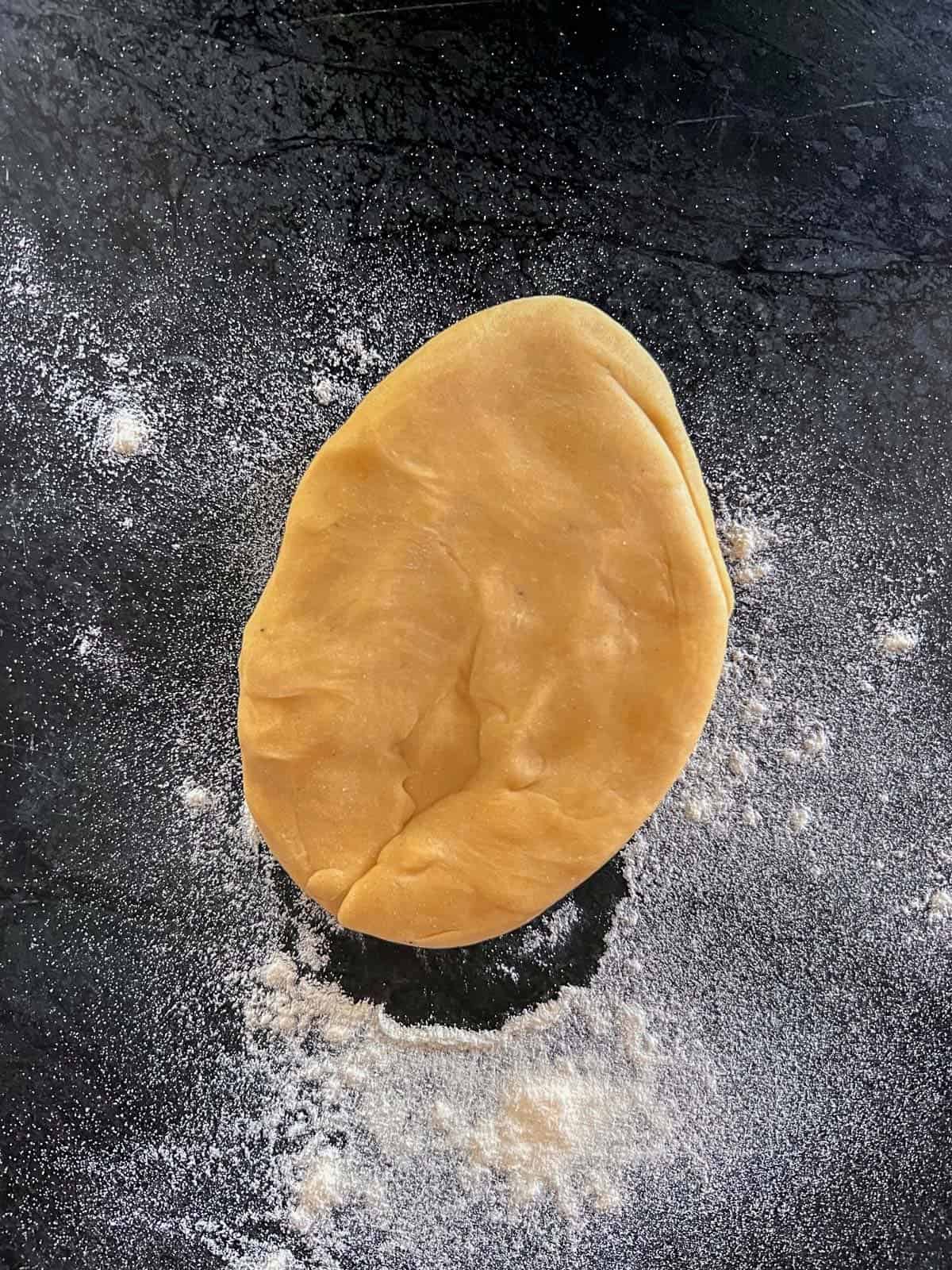



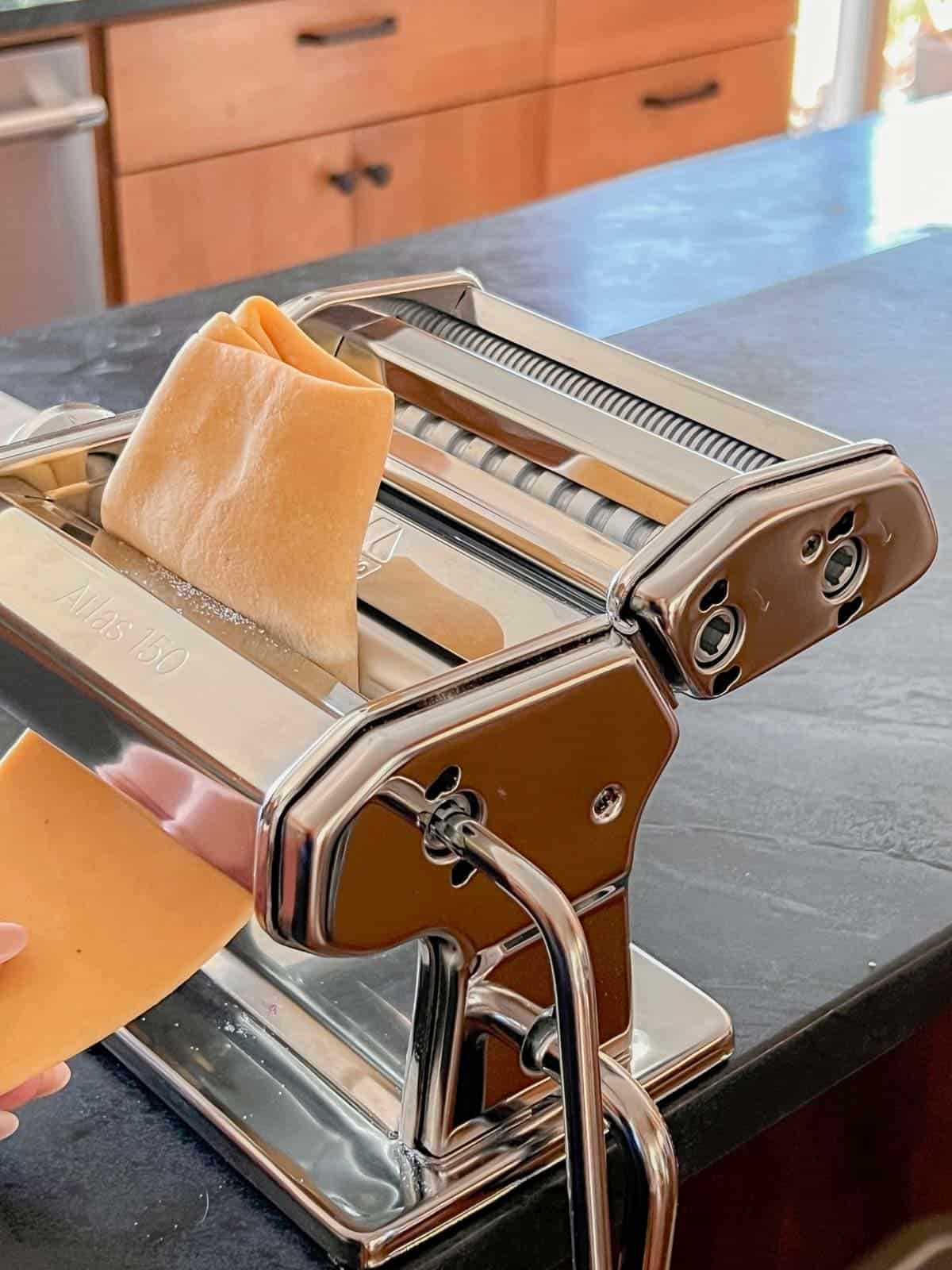



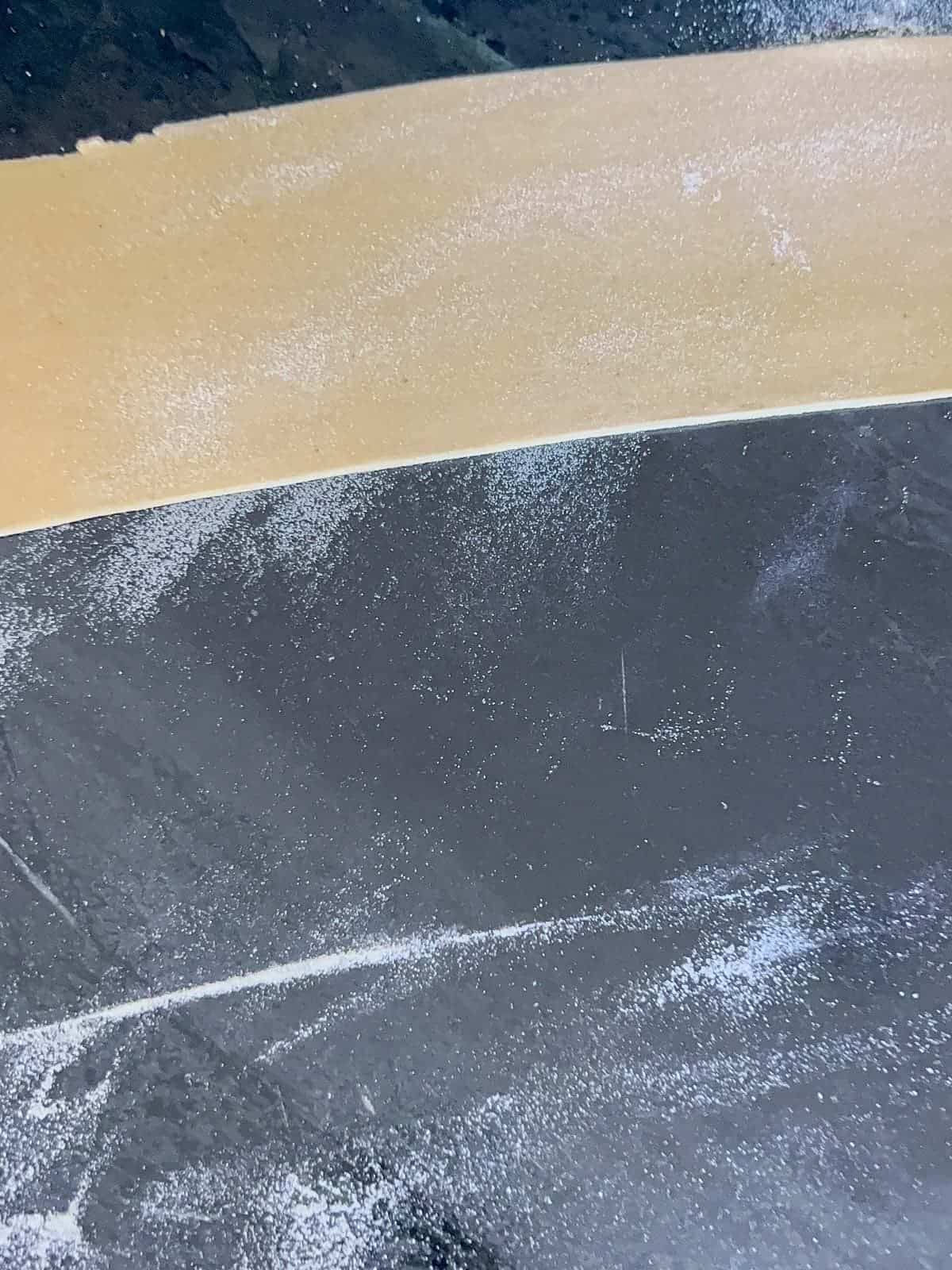
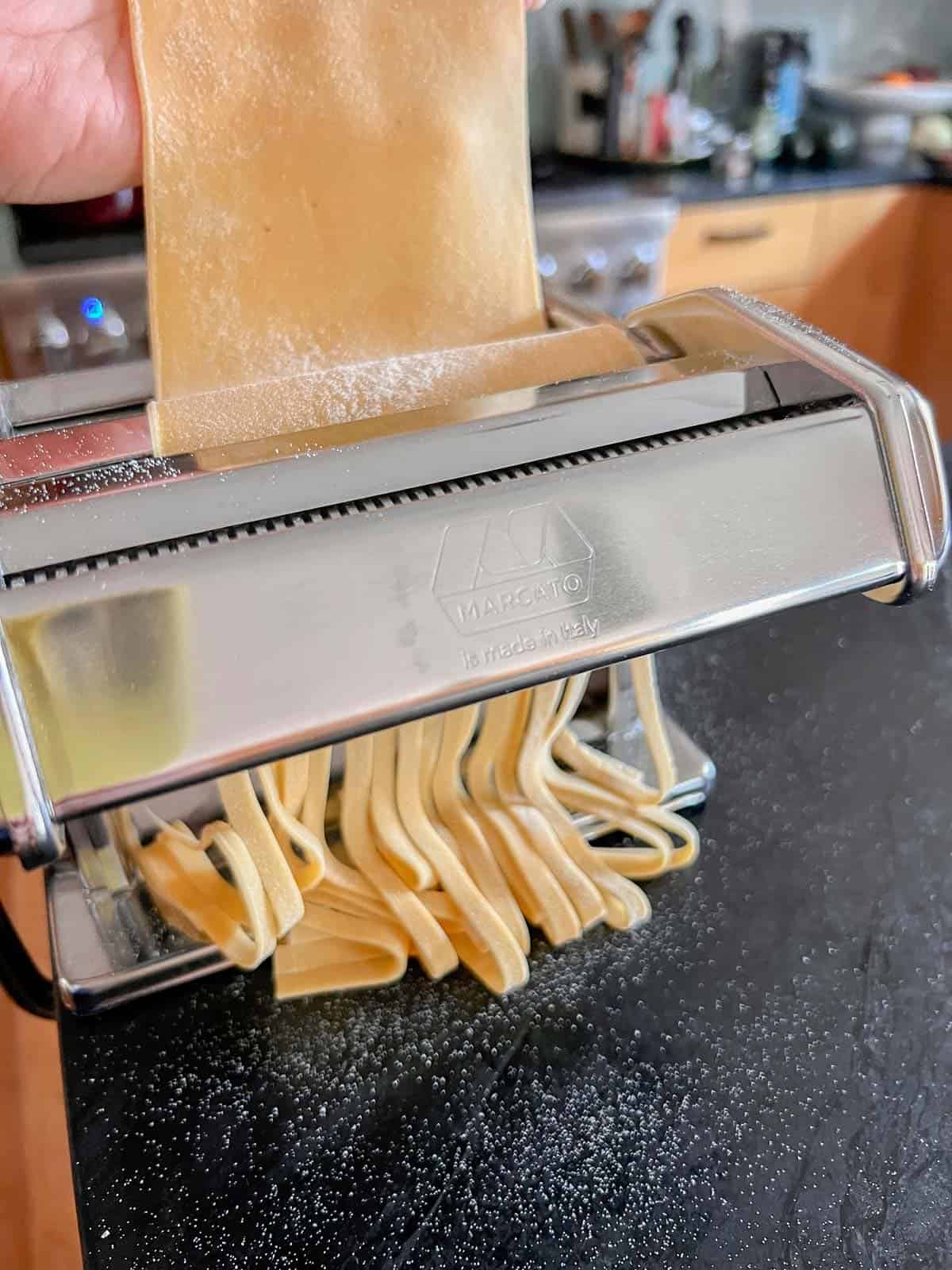

Types Of Fresh Pasta
Once you mix up a batch of fresh pasta dough, you can roll it out and cut it into various pasta shapes.
There are two types of tools that shape and cut the pasta dough. One is the pasta roller, and the other is a pasta extruder.

A pasta roller is used to make:
- Lasagna sheets
- Sheets for making ravioli
- Long noodles like fettuccini, spaghetti, pappardelle, and many more.
A pasta extruder is used to make noodles with holes in the middle like:
- Bucatini
- Macaroni
- Penne
How To Cook Homemade Pasta
Fresh pasta cooks much faster than dried store-bought pasta. You only need to cook it for a few minutes for a perfect al dente noodle.
- Bring a pot of water to boil. Salt the water with 1 tablespoon of salt.
- Turn the heat down to a low boil before adding the pasta.
- Cook the pasta for 1 to 3 minutes, until it is al dente.
How To Dry Pasta
Fresh pasta should be dried before cooking. The drying time needed depends on how long you plan to store the pasta before cooking it.
- Start by sprinkling the fresh-cut pasta with a light dusting of flour. I like to use a flour sprinkler for this step.
- A drying rack is helpful when drying noodles. I opted for a collapsible wooden drying rack. It’s easy to use and easy to store.
- Fresh pasta can be completely air-dried and then stored. You will want to make sure it is thoroughly dry for long-term storage.
- A dehydrator can help to speed up the drying process.
How To Freeze Pasta
- After the pasta is rolled out, sprinkle it with a light dusting of flour.
- Allow the pasta to dry briefly on a pasta drying rack or flat on a lightly floured surface. You can also use a large baking sheet for drying pasta.
- Form the pasta into nests and set them on a baking sheet in a single layer. Place them in the freezer and allow them to freeze thoroughly.
- Once the pasta is thoroughly frozen, store it in an airtight container until ready to use.
- To thaw the frozen pasta, place it in the fridge overnight and allow the pasta to thaw before boiling.
Frequently Asked Questions
70-120 grams per person is the recommended serving size of pasta per person.
Fresh pasta is best cooked within 18 to 24 hours.
Yes, freezing is a great way to preserve fresh pasta. After brief drying, pasta can be frozen in individual serving-size portions.
1 to 3 minutes, depending on the type of pasta.
The time it takes homemade pasta to dry depends on the thickness of the pasta and the humidity in your home.
Yes, absolutely. Homemade pasta can easily be rolled out with a rolling pin and sliced into noodles.
Serving Suggestions
Pasta always makes a satisfying meal. And as a bonus, pasta recipes usually come together in no time. Here are a few of our favorites.
No posts
Did you love this recipe?
Please leave a 5-star 🌟🌟🌟🌟🌟 rating and a comment below ⬇️
I love hearing from you in the comments; & your feedback helps other readers and helps me continue offering recipes at no cost. Drop a comment 👇
Homemade Pasta Recipe
Equipment
- pasta attachements for Kitchen Aid optional
- pizza cutter optional
- ravioli wheel optional
- flour duster optional
- Atlas 150 pasta machine optional
Ingredients
- 2 ½ cups "00" flour, 350g
- 4 large eggs, at room temperature
- 2 teaspoons olive oil (affiliate link)
- ¼ teaspoon fine sea salt
- pinch nutmeg, optional
- 1 tablespoons semolina flour, for dusting
Instructions
- Measure the flours onto your work surface. Mix in the salt. Using your hands create a mound and then a well in the center of the mound of flour.2 ½ cups "00" flour, ¼ teaspoon fine sea salt, pinch nutmeg
- Add the eggs and the olive to the center of the well.4 large eggs, 2 teaspoons olive oil
- Use a fork to whisk the eggs and olive oil together. Be careful to keep the liquid in the center of the well. Using the fork gradually start to incorporate the flour into the center of the well. You can use your other hand to support the edges of the well as you mix in the eggs.
- When the liquid is mostly incorporated start using your hands to knead the dough. Knead the dough until it is smooth and elastic.
- Place the dough on your work surface and cover it with a bowl. Let it rest on the counter for at least 30 minutes before making pasta noodles. This allows the glutens to relax.
To Cook Homemade Pasta
- Bring a pot of water to boil. Salt the water with 1 tablespoons of salt.
- Add the pasta and boil for 2 to 3 minutes.
YOUR OWN NOTES
Sign In to add your own private notes












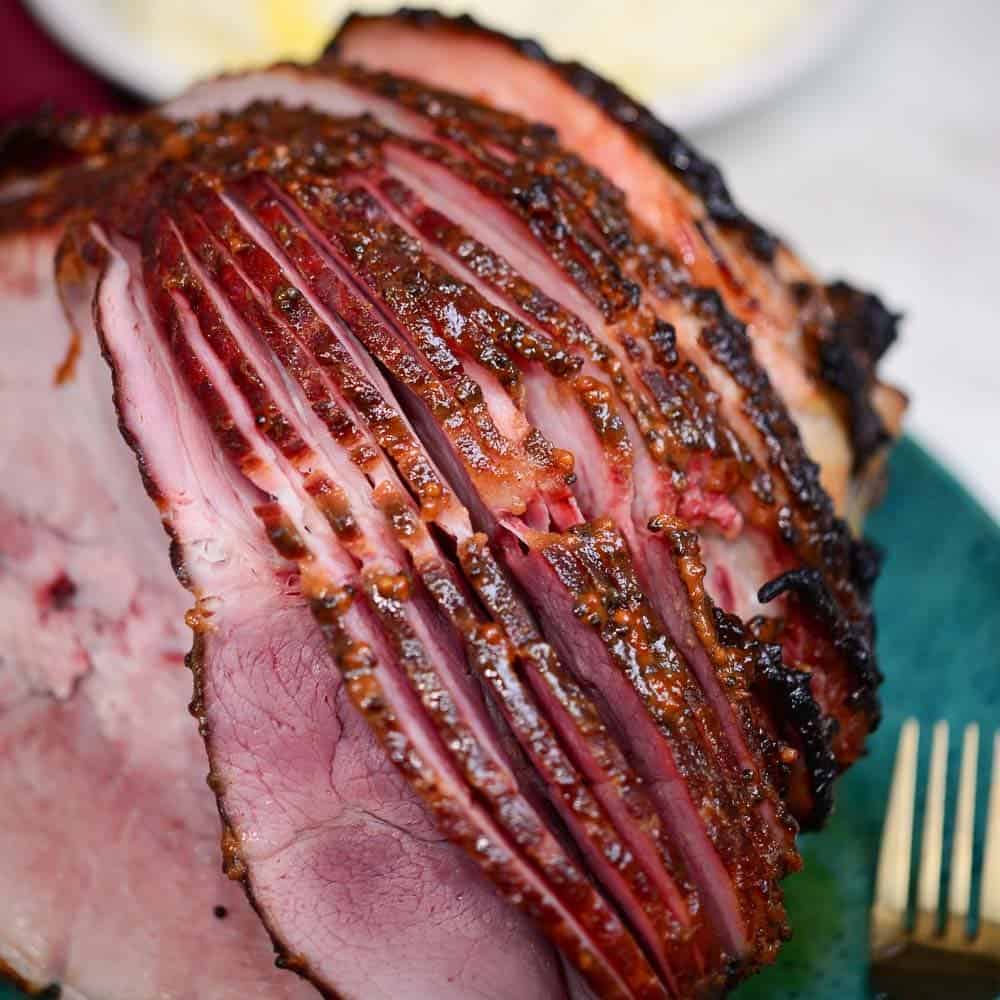



Laura, Great recipe. I have a Marcato pasta machine. While one of the rollers turned, it did not grab the dough. What did I do wrong?
Hmmmm….so there could be a few things. Did you have it set to 0 for the ist few pass-throughs? Did you roll the dough out slightly flat before attempting to insert it? Also, make sure that you are turning the crank in the right direction. I have done that before and turned the crank the wrong way.